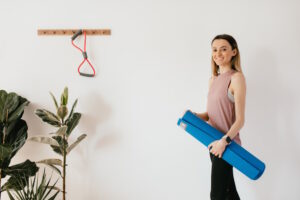
When it comes to Pilates equipment, there are various brands that offer a range of options to suit different needs and preferences. Understanding the features of different Pilates equipment brands is important in order to make informed decisions and select the equipment that best aligns with your goals and requirements. In this article, we will explore popular Pilates equipment brands and their features, discuss the equipment used in Pilates, identify the most popular piece of Pilates equipment, highlight the key features to consider when evaluating Pilates equipment and examine the reasons why using Pilates equipment can be beneficial.
What equipment do they use for Pilates?
Pilates utilizes a variety of equipment to facilitate the practice and enhance its effectiveness. Common pieces of equipment used in Pilates include the reformer, Cadillac (also known as the trapeze table), Wunda Chair, Ladder Barrel, and various props such as resistance bands, Pilates rings, and foam rollers. Each piece of equipment offers unique features and benefits, targeting specific muscle groups, promoting core strength, enhancing flexibility, and improving overall body conditioning. The choice of equipment depends on individual preferences, goals, and the guidance of a qualified instructor.
What is the most popular piece of Pilates equipment?
The reformer is often considered the most popular piece of Pilates equipment. It consists of a carriage that moves back and forth along a frame and is attached to springs of varying resistance. The reformer offers a versatile platform for a wide range of exercises, providing resistance, support, and control. Its popularity can be attributed to its ability to target multiple muscle groups, challenge the body in various planes of motion, and facilitate progressive strength and flexibility training.
What are the features of Pilates equipment?
When exploring Pilates equipment brands, there are several features to consider. These features can vary depending on the brand and model of the equipment, but some common aspects to evaluate include:
1. Construction and Durability: Look for equipment made from high-quality materials that are sturdy and durable, ensuring the longevity and safety of the equipment.
2. Adjustability: Consider the adjustability of the equipment, such as the ability to modify resistance levels, change spring tensions, and adjust settings to accommodate different body sizes and abilities.
3. Comfort and Ergonomics: Evaluate the comfort level and ergonomic design of the equipment, including the padding, upholstery, handles, and footrests. It should provide proper support and alignment during exercises.
4. Smooth and Quiet Operation: Seek equipment that operates smoothly and quietly, allowing for uninterrupted workouts and providing a pleasant exercise experience.
5. Versatility: Consider the range of exercises that can be performed on the equipment and its ability to target different muscle groups and movement patterns. Versatility allows for a more comprehensive and varied workout experience.
Why use Pilates equipment?
Pilates equipment offers several advantages over mat-based exercises. Using Pilates equipment provides variable resistance that challenges the muscles throughout the range of motion, leading to improved strength, flexibility, and control. The equipment also offers support and assistance, allowing individuals to perform exercises they may find challenging without the added support. Pilates equipment facilitates proper alignment and body mechanics, promoting safe and effective movements. It also provides a dynamic and engaging workout experience, adding variety and versatility to Pilates practice.
In summary, exploring Pilates equipment brands and their features is essential to make informed choices when selecting equipment for Pilates practice. The equipment used in Pilates includes the reformer, Cadillac, Wunda Chair, Ladder Barrel, and various props, each offering unique benefits and targeting specific muscle groups. The reformer stands as one of the most popular pieces of Pilates equipment due to its versatility and effectiveness. When evaluating Pilates equipment, important features to consider include construction and durability, adjustability, comfort and ergonomics, smooth and quiet operation, and versatility. Using Pilates equipment offers advantages such as variable resistance, support, proper alignment, and an engaging workout experience. By understanding the features and benefits of Pilates equipment brands, individuals can make informed decisions and select the equipment that best suits their needs, enabling them to enhance their Pilates practice and achieve their fitness goals.